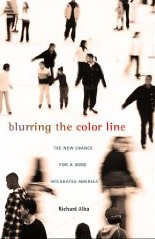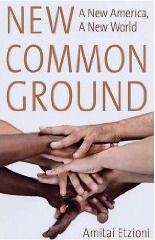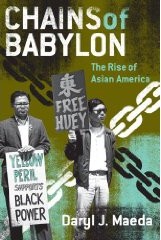October 2, 2009
Written by C.N.
New Books: Achieving Racial Equality
As part of this blog’s mission of making academic research and data more easily accessible, understandable, and applicable to a wider audience and to practical, everyday social issues, I highlight new sociological books about Asian Americans and other racial/ethnic groups as I hear about them.
As some of my readers have lamented, one of the drawbacks about looking at racial issues is that much of the research and writing focuses on the negatives — what’s wrong with the situation, who/which groups is/are hurt the most, how society is not just flawed but even responsible for the mess, etc. With that in mind, these new books look at the positives and successes — how we can and have moved forward toward more racial equality.
Blurring the Color Line: The New Chance for a More Integrated America, by Richard Alba (Harvard University Press)

Richard Alba argues that the social cleavages that separate Americans into distinct, unequal ethno-racial groups could narrow dramatically in the coming decades. During the mid-twentieth century, the dominant position of the United States in the postwar world economy led to a rapid expansion of education and labor opportunities. As a result of their newfound access to training and jobs, many ethnic and religious outsiders, among them Jews and Italians, finally gained full acceptance as members of the mainstream.
Alba proposes that this large-scale assimilation of white ethnics was a result of “non-zero-sum mobility,†which he defines as the social ascent of members of disadvantaged groups that can take place without affecting the life chances of those who are already members of the established majority.
Alba shows that non-zero-sum mobility could play out positively in the future as the baby-boom generation retires, opening up the higher rungs of the labor market. Because of the changing demography of the country, many fewer whites will be coming of age than will be retiring. Hence, the opportunity exists for members of other groups to move up.
However, Alba cautions, this demographic shift will only benefit disadvantaged American minorities if they are provided with access to education and training. In Blurring the Color Line, Alba explores a future in which socially mobile minorities could blur stark boundaries and gain much more control over the social expression of racial differences.
New Common Ground: A New America, A New World, by Amitai Etzioni (Potomac Books)

Race, age, political affiliation, country of origin, native language—too often Americans define themselves, and are defined, by the differences that separate them. But if the 2008 presidential campaign has taught us anything, it is that we as a people want to look beyond these divisions to the values and interests that unite us.
New Common Ground embodies this zeitgeist, showing the ways that traditional boundaries among ethnic groups, political ideologies, and generations are blurring, and how to hasten the process. New Common Ground demonstrates that even though the deepest divide in America is said to be racial, the differences in viewpoints and values among races are declining, even in an age of increased intermarriage.
On immigration and other controversial matters, Etzioni argues for diversity within unity and the means to achieve that necessary end. New Common Ground is a provocative and insightful look into how we as Americans can reach consensus not just in spite of our diversity but also in ways that strengthen our commitment to the good of one and all as we seek to overcome the divisiveness that sometimes results from identity politics. The book closes by looking beyond our shores to the bridges that bring America closer to the rest of the world.
Chains of Babylon: The Rise of Asian America, by Daryl J. Maeda (University of Minnesota Press)

In Chains of Babylon, Daryl J. Maeda presents a cultural history of Asian American activism in the late 1960s and early 1970s, showing how the movement created the category of “Asian American” to join Asians of many ethnicities in racial solidarity. Drawing on the Black Power and antiwar movements, Asian American radicals argued that all Asians in the United States should resist assimilation and band together to oppose racism within the country and imperialism abroad.
As revealed in Maeda’s in-depth work, the Asian American movement contended that people of all Asian ethnicities in the United States shared a common relationship to oppression and exploitation with each other and with other nonwhite peoples. In the early stages of the civil rights era, the possibility of assimilation was held out to Asian Americans under a model minority myth.
Maeda insists that it was only in the disruption of that myth for both African Americans and Asian Americans in the 1960s and 1970s that the full Asian American culture and movement he describes could emerge. Maeda challenges accounts of the post-1968 era as hopelessly divisive by examining how racial and cultural identity enabled Asian Americans to see eye-to-eye with and support other groups of color in their campaigns for social justice.
Asian American opposition to the war in Vietnam, unlike that of the broader antiwar movement, was predicated on understanding it as a racial, specifically anti-Asian genocide. Throughout he argues that cultural critiques of racism and imperialism, the twin “chains of Babylon” of the title, informed the construction of a multiethnic Asian American identity committed to interracial and transnational solidarity.

